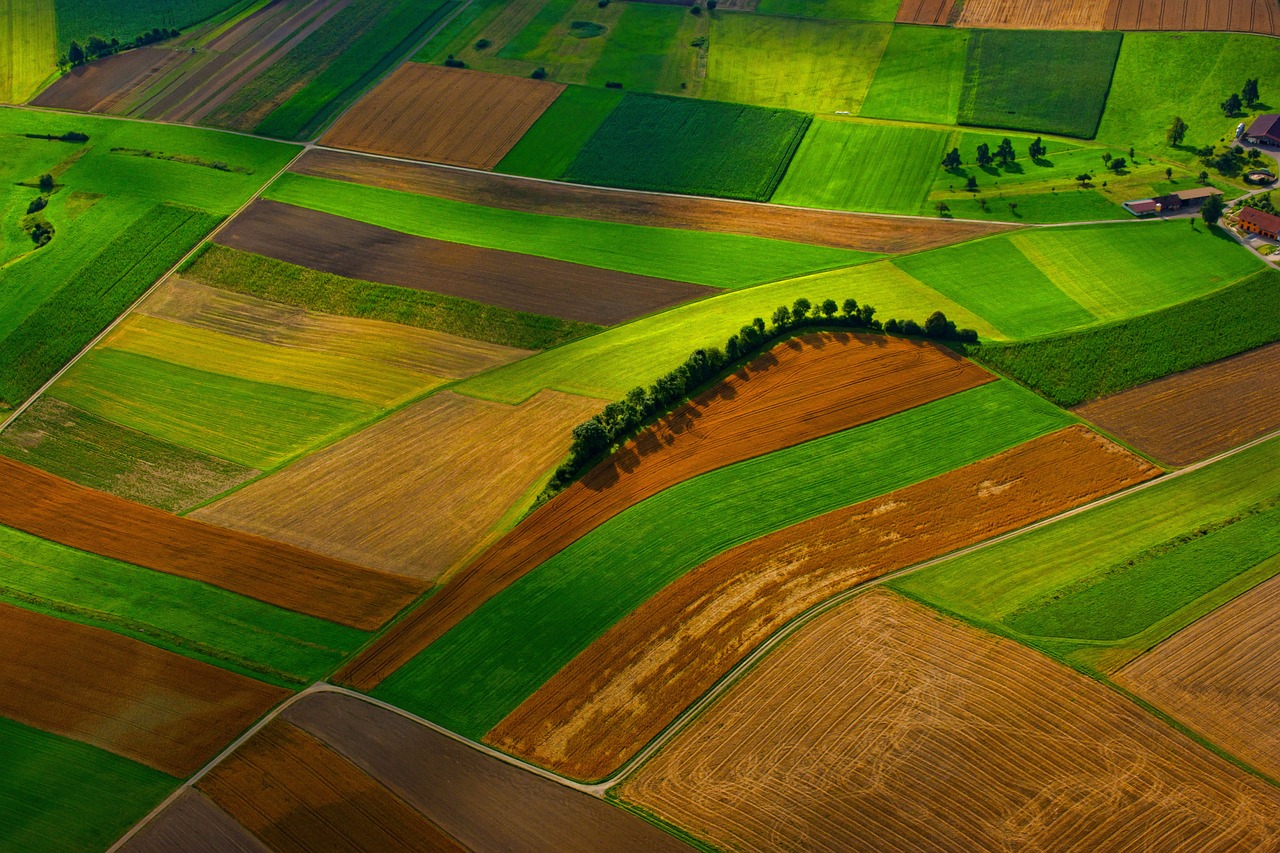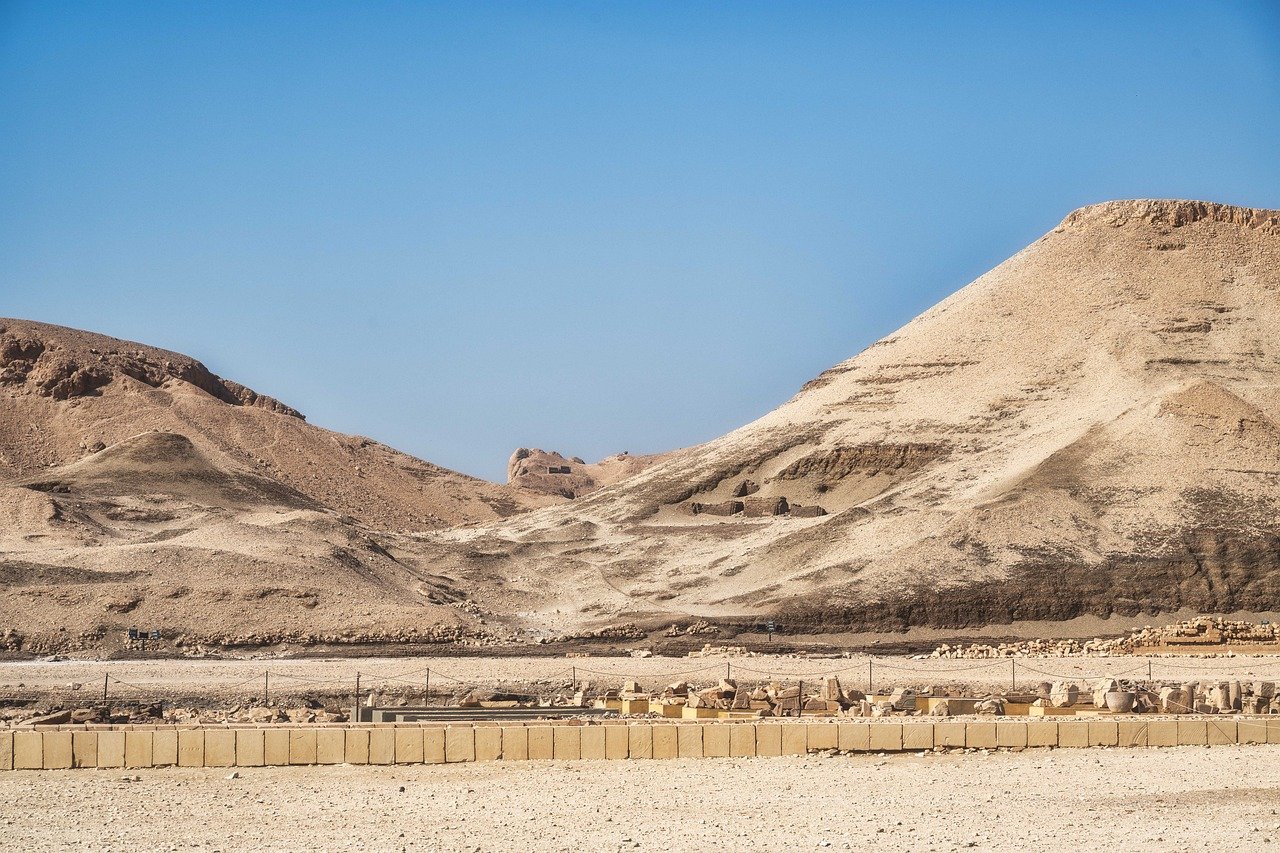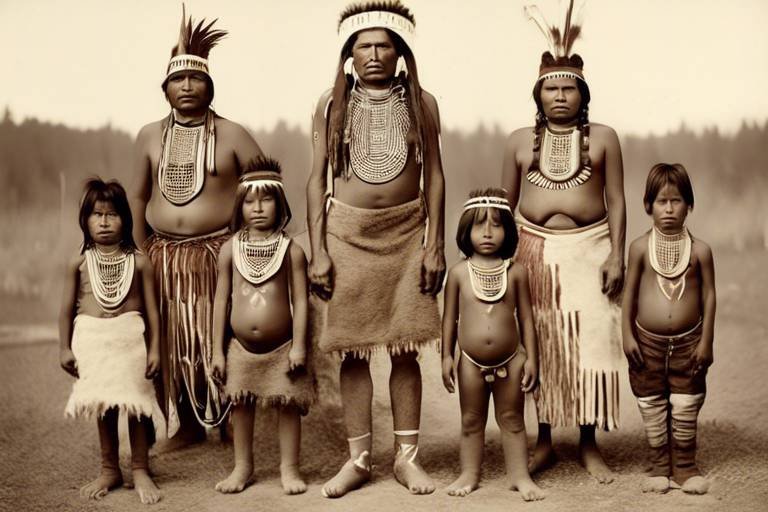The Role of Agriculture in Ancient Societies
Agriculture played a pivotal role in the development and sustenance of ancient societies, serving as the foundation upon which civilizations flourished. The cultivation of crops and domestication of animals not only provided sustenance for communities but also laid the groundwork for societal advancement, shaping economies, social structures, and cultural practices.

Agriculture as the Foundation of Civilization
Agriculture as the Foundation of Civilization played a pivotal role in shaping the course of human history. In ancient societies, the practice of agriculture was not merely a means of sustenance but a fundamental pillar upon which civilizations were built. The cultivation of crops and domestication of animals laid the groundwork for settled communities, marking the transition from nomadic hunter-gatherer lifestyles to permanent settlements.
Agriculture revolutionized the way ancient societies functioned, providing a reliable food source that allowed populations to grow and thrive. With the surplus food generated through farming, communities could support specialized labor, leading to the development of complex social structures and hierarchies. This shift towards agriculture as the primary means of sustenance marked the beginning of organized civilization.
Agriculture not only provided sustenance but also fostered innovation and technological advancements. Ancient farmers developed tools and techniques to improve crop yields, such as irrigation systems, plows, and crop rotation methods. These advancements not only increased agricultural productivity but also enabled ancient societies to support larger populations and engage in trade with neighboring communities.
The practice of agriculture also played a significant role in shaping cultural practices and beliefs in ancient societies. Many civilizations viewed the land as sacred, with agricultural rituals and ceremonies forming an integral part of religious practices. The cycle of planting, harvesting, and fertility became intertwined with spiritual beliefs, highlighting the deep connection between humanity and the natural world.
Furthermore, agriculture served as a catalyst for the development of complex economic systems in ancient civilizations. The surplus food produced by farmers allowed for the emergence of trade networks, wealth accumulation, and the rise of urban centers. Agricultural surpluses became a form of currency, shaping the economic landscape and influencing the distribution of power within ancient societies.
In essence, agriculture was not just a means of survival but a transformative force that laid the foundation for the growth and prosperity of ancient civilizations. The cultivation of the land not only sustained populations but also fueled innovation, social development, and cultural practices, shaping the course of human history for generations to come.

Technological Advancements in Ancient Farming
Agriculture played a pivotal role in shaping ancient societies, serving as the cornerstone of civilization and paving the way for progress in various aspects of human life. From technological advancements to economic prosperity, the impact of agriculture on ancient communities was profound and far-reaching.
Ancient farming techniques were marked by remarkable technological advancements that revolutionized agricultural practices and enhanced productivity. Innovations such as the invention of the plow, irrigation systems, and crop rotation techniques significantly improved crop yields and sustained growing populations.
Ancient civilizations, such as the Mesopotamians and Egyptians, developed sophisticated irrigation systems to harness water resources for agriculture. The use of oxen and other draft animals for plowing fields increased efficiency and allowed for the cultivation of larger areas of land.
The introduction of metal tools, such as sickles and scythes, enabled farmers to harvest crops more efficiently, leading to increased agricultural output. Additionally, the domestication of livestock provided a valuable source of food, labor, and fertilizer for farming communities.
Furthermore, the development of storage facilities, such as granaries, allowed ancient farmers to preserve surplus crops for times of scarcity and trade. These technological advancements in ancient farming laid the foundation for sustainable agriculture and food security in ancient societies.
Q: How did technological advancements in ancient farming contribute to the growth of ancient civilizations?
A: Technological innovations in agriculture enabled ancient civilizations to produce surplus food, leading to population growth, urbanization, and the development of complex societies.
Q: What role did irrigation systems play in ancient farming?
A: Irrigation systems allowed ancient farmers to control water flow, irrigate arid lands, and cultivate crops in regions with limited rainfall, thereby expanding agricultural production and supporting larger populations.
Q: Why were metal tools crucial for ancient farmers?
A: Metal tools, such as sickles and plows, increased the efficiency of farming operations, making it easier to cultivate and harvest crops, leading to higher yields and improved food security.

Impact of Agricultural Surpluses on Ancient Economies
When we delve into the annals of history, the impact of agricultural surpluses on ancient economies emerges as a pivotal force that shaped the course of civilizations. The surplus food generated through advanced agricultural practices not only sustained the growing populations but also catalyzed significant changes in trade dynamics, wealth distribution, and the emergence of complex economic systems.
Agricultural surpluses acted as the lifeblood of ancient economies, fueling the wheels of commerce and prosperity. The abundance of food allowed societies to engage in trade, both locally and across vast distances, leading to the exchange of goods, ideas, and cultural practices. This interconnectivity transformed isolated communities into thriving hubs of economic activity, fostering growth and innovation.
Moreover, the surplus yields from agriculture played a crucial role in shaping social hierarchies and power structures within ancient societies. The control and distribution of surplus food granted individuals or institutions economic leverage, influencing political dynamics and societal organization. This concentration of agricultural wealth laid the foundation for the development of specialized professions, trade networks, and economic stratification.
Furthermore, the surplus food generated by efficient agricultural practices enabled ancient civilizations to weather periods of scarcity and uncertainty. By stockpiling surplus grains, fruits, and livestock, societies could mitigate the impact of crop failures, natural disasters, or conflicts, ensuring a level of food security essential for survival and stability.
In essence, the impact of agricultural surpluses on ancient economies transcended mere sustenance; it fostered growth, interconnectedness, and resilience. The surplus yields not only nourished bodies but also nurtured the economic, social, and cultural fabric of ancient civilizations, leaving an indelible mark on the course of history.

Religious and Spiritual Significance of Agriculture
In ancient societies, agriculture held immense religious and spiritual significance that went beyond mere sustenance. Cultivating the land was not just a means of survival but a sacred act intertwined with beliefs, rituals, and ceremonies that honored the earth and its bounty. The connection between agriculture and spirituality was deeply rooted in the reverence for nature and the cycles of life and death.
Agricultural practices often mirrored cosmic events, with planting and harvesting aligned with celestial movements or religious festivals. The cultivation of crops was not solely a physical endeavor but a spiritual one, with prayers and offerings made to deities associated with fertility, harvest, and abundance. The act of sowing seeds and reaping the harvest was seen as a collaboration between humans and the divine, symbolizing the cycle of creation and sustenance.
Moreover, the land itself was considered sacred in many ancient cultures, believed to be imbued with spiritual energy and connected to the realm of the gods. Farmers performed rituals to appease the earth spirits, seeking their blessing for a fruitful harvest and protection from natural disasters. The agricultural calendar was often marked by religious ceremonies, feasts, and processions that celebrated the interconnectedness of humanity, nature, and the divine.
Religious leaders and priests played a central role in agricultural rituals, acting as intermediaries between the community and the spiritual realm. They oversaw ceremonies to ensure the fertility of the land, the well-being of livestock, and the prosperity of the people. The spiritual significance of agriculture permeated every aspect of ancient society, shaping beliefs, customs, and social structures.

Challenges and Risks Faced by Ancient Farmers
Ancient farmers faced a myriad of challenges and risks in their agricultural endeavors, navigating a world fraught with uncertainties and obstacles. One of the primary challenges was the unpredictability of weather patterns, as droughts, floods, and other natural disasters could devastate crops and lead to widespread famine. To mitigate these risks, ancient farmers developed sophisticated irrigation systems and storage facilities to ensure a stable food supply even in times of crisis.
Furthermore, pests and diseases posed a constant threat to agricultural productivity, requiring farmers to devise innovative methods of pest control and crop protection. Without the modern pesticides and fungicides available today, ancient farmers had to rely on natural remedies and crop rotation techniques to maintain the health of their fields and livestock.
Social challenges also loomed large for ancient farmers, as disputes over land ownership, water rights, and labor often led to conflicts within farming communities. The division of labor based on gender roles also presented challenges, with women typically responsible for tasks such as planting and harvesting, while men focused on plowing and animal husbandry.
Moreover, the reliance on manual labor and rudimentary tools made agricultural work physically demanding and labor-intensive. Farmers had to toil in the fields for long hours under the scorching sun, facing exhaustion and injury as they worked to cultivate the land and reap its bounty.
In the face of these challenges, ancient farmers demonstrated remarkable resilience and ingenuity, adapting to their environment and developing sustainable farming practices that allowed their civilizations to thrive. Through their perseverance and resourcefulness, ancient farmers laid the foundation for the agricultural traditions that continue to shape our world today.

Gender Roles in Ancient Agricultural Societies
Gender roles in ancient agricultural societies played a crucial role in shaping the social structure and division of labor within these communities. In many ancient civilizations, such as Egypt, Mesopotamia, and China, gender roles were clearly defined, with men typically responsible for tasks such as plowing fields, herding livestock, and building infrastructure, while women primarily focused on activities like planting, harvesting, and food preparation.
These gender roles were not merely based on physical capabilities but were deeply ingrained in the cultural and societal norms of the time. Men were often seen as the providers and protectors of the family, while women were viewed as caretakers of the household and children. Despite these distinctions, both men and women played essential roles in ensuring the success and sustainability of agricultural practices.
Moreover, the division of labor between genders in ancient agricultural societies extended beyond the fields. Women were also responsible for preserving seeds, managing food storage, and engaging in trade activities, showcasing their significant contributions to the economic well-being of their communities.
While men typically held positions of authority and leadership in agricultural decision-making, women held considerable influence in domestic affairs and often possessed specialized knowledge about plant cultivation and animal husbandry. This dynamic interplay between gender roles created a complex yet harmonious system where each individual's contributions were valued and essential for the community's survival.

Urbanization and the Growth of Ancient Agricultural Centers
Urbanization played a pivotal role in the growth and development of ancient agricultural centers, shaping the landscape of early civilizations. As populations grew and agricultural practices advanced, the need for centralized hubs for trade, governance, and cultural exchange became evident. Urban centers emerged as focal points of economic activity, drawing people from rural areas to engage in specialized roles and services.
One of the key drivers of urbanization was the concentration of agricultural surplus in these centers. The ability to produce more food than required for immediate consumption allowed for the establishment of marketplaces where goods could be exchanged, creating a system of trade that fueled the growth of urban areas. This surplus also supported the development of specialized industries and crafts, leading to the diversification of the economy within these agricultural hubs.
Moreover, the growth of ancient agricultural centers was closely tied to the infrastructure and organization required to support large populations. Irrigation systems, storage facilities, and transportation networks were essential components of these urban areas, enabling efficient distribution of food and resources. The establishment of administrative structures and governing bodies further facilitated the management of these complex societies.
As urbanization continued to expand, the social dynamics within these agricultural centers evolved. Hierarchies emerged, with distinct social classes based on wealth, occupation, and lineage. The proximity of diverse populations in urban settings fostered cultural exchange, artistic expression, and intellectual pursuits, contributing to the richness and diversity of ancient societies.
In conclusion, urbanization was a transformative process that accompanied the growth of ancient agricultural centers, shaping the development of early civilizations and laying the foundation for the interconnected world we live in today.

Agricultural Practices in Different Ancient Civilizations
When examining the agricultural practices of different ancient civilizations, it becomes evident that each society developed unique techniques and systems tailored to their environment and resources. In ancient Egypt, the Nile River played a crucial role in agriculture, with the annual flooding providing fertile soil for crops like wheat and barley. The Egyptians also pioneered irrigation methods, such as the use of canals and shadufs, to manage water resources efficiently.
On the other hand, Mesopotamia, known as the "cradle of civilization," relied on the Tigris and Euphrates rivers for irrigation. The Sumerians in Mesopotamia were among the first to practice organized agriculture, cultivating crops like barley, dates, and lentils. They developed advanced irrigation systems, including the use of levees and canals, to control water flow and prevent flooding.
In ancient China, agriculture was centered around the Yellow and Yangtze rivers. The Chinese civilization excelled in terrace farming on hilly terrain, allowing them to grow rice, millet, and wheat. They also introduced crop rotation and the use of fertilizers to maintain soil fertility. The Chinese were early adopters of agricultural innovations, such as the iron plow and seed drill.
Furthermore, the Indus Valley civilization in present-day Pakistan and northwest India practiced sophisticated agricultural techniques. They cultivated a variety of crops, including wheat, barley, and cotton, and built intricate irrigation systems to support their agriculture. The Indus Valley people also engaged in trade, exchanging their agricultural products with other regions.
Each ancient civilization's agricultural practices were influenced by factors such as geography, climate, available resources, and cultural traditions. Despite the differences in techniques and crops grown, agriculture served as the foundation of these societies, sustaining their populations and fostering economic development.
Frequently Asked Questions
- What role did agriculture play in ancient societies?
Agriculture was the foundation of ancient civilizations, shaping their economies, social structures, and cultural practices. It provided the basis for settlement, surplus food production, and the growth of urban centers.
- How did technological advancements impact ancient farming?
Ancient civilizations developed innovative tools and techniques to improve agricultural productivity, such as irrigation systems and crop rotation. These advancements allowed them to sustain their populations and thrive.
- What was the significance of agricultural surpluses in ancient economies?
The surplus food produced through agriculture played a crucial role in the development of trade, wealth distribution, and complex economic systems in ancient societies. It enabled specialization and the growth of markets.
- What were the gender roles in ancient agricultural societies?
Men and women had distinct roles in agricultural activities in ancient societies, with men often involved in plowing and heavy labor, while women focused on tasks like planting and harvesting. These roles were influenced by social norms and cultural beliefs.
- How did urbanization impact ancient agricultural centers?
The growth of urban centers around agricultural hubs led to the development of complex civilizations. Urbanization brought about specialization, trade networks, and social stratification, transforming ancient societies.



















